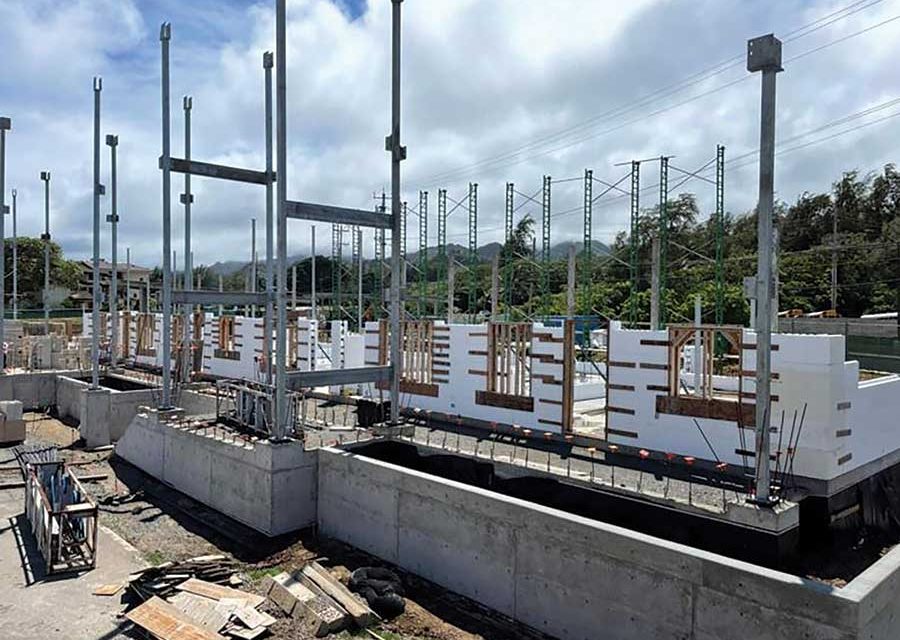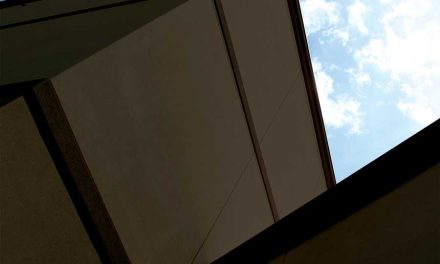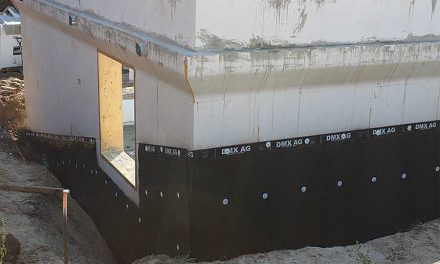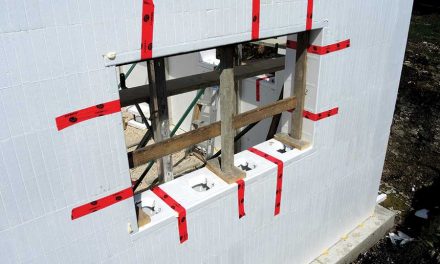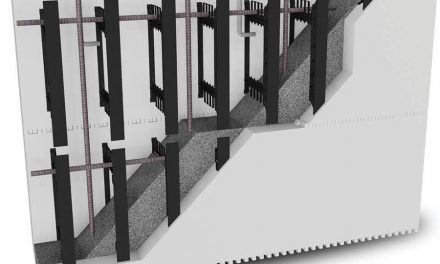The major question everyone is posting regarding building materials and wall assemblies is related to cost, specifically the initial capital costs for the options of building with ICFs versus traditional wood framing or concrete block. This is not a simple question because there are far too many variables in design, location, and material cost fluctuations, among others, to provide any form of an accurate answer. Not to mention considerations for the end goal regarding sustainability, resiliency, energy efficiency and comfort. In doing any comparative building analysis, the main focus is to make sure the material and labor costs are “apples to apples.”
When building with ICFs the wall assembly will be above code minimum, easily meeting an evaluation as a high-performance, net-zero ready building. In an “apples to apples” evaluation, any other building envelope wall assembly must meet the same criteria.
ICFs have many advantages and attributes for the construction process, end-use operating costs, resiliency, health, and comfort. The main attribute is that an ICF building envelope provides and is classified as high-performance for thermal resistance and air tightness. This comes from the double layer of continuous insulation, the mass of monolithic concrete providing air tightness, and no loss of R-value due to thermal bridging.
A wood-framed building must be comparable for performance, meaning at least 2×6 studs, interior and exterior insulation, caulked air sealing, sealing tape, vapor barrier, air/weather barrier, wind bracing, shear walls, etc. The applications of these multiple materials must be coordinated, typically by multiple trades, to ensure the envelope is secure from air, water, and moisture intrusion. Wood and batt insulation do not function well when subjected to water or moisture.
A concrete block structure requires a similar application of multiple materials to make it a high-performance well-insulated, airtight wall assembly.
In a straight comparison on the number of materials for high-performance wall assemblies:
- ICFs have 3 – ICF block, concrete, and rebar
- Wood framing has 8+ – weather/air barrier, sealing tape, exterior insulation, sheeting, studs, batt insulation, sealant caulking, vapor barrier, and sealing tape
- CMU has 8+ – weather/air barrier, sealing tape, exterior insulation, CMU block, rebar, strapping, interior insulation, vapor barrier, and sealing tape
Looking at a comparison on construction sustainability, the key focus is on reduction of waste, recycling, conserving energy, and building green. These elements, unfortunately, may not be included in the initial cost calculations, but each one identifies an advantage for ICFs over traditional wood framing and CMU wall assemblies.
Reduction of Waste
Construction waste is a big consideration for any builder. Waste means lost costs, wasted materials, haulage, and dumping fees. ICFs are a modular product, and having a good building design minimizes cutting of the blocks. Since the blocks have a reversible interlock, any horizontally cut blocks can be flipped and used elsewhere in the build. Blocks cut vertically may be installed elsewhere in a wall assembly. Utilizing a common or standing seam, any wall dimension can be achieved with minimal cutting and waste. An ICF wall assembly provides structure, air/weather barrier, vapor barrier, continuous insulation, and fastening points for interior and exterior finishes.
Other materials or labor are not required in an ICF wall assembly for air, water, moisture intrusion, and thermal resistance functions, which minimizes material waste. The more materials involved in a wall assembly equals the possibility for additional costs and more waste. This is a major factor in a comparison with multiple material high-performance wall assemblies. More materials and application techniques equals more labor.
Recycling
On an ICF, the main components, EPS and polypropylene plastic, where applicable, are both recyclable products. The EPS may also be ground and used as fill material. The cross-ties are recyclable plastic. All parts of an ICF are recyclable, which equals zero waste.
Conserving Energy
This is a big topic related to evaluating ICF versus other wall assemblies. Conserving energy is a huge consideration for the home or building occupant or owner. Wall assemblies can be built to have the same or similar R-values. The proven advantages for an ICF wall assembly for energy performance are thermal mass, no thermal bridging, and excellent air tightness. Wood-framed walls, even with exterior insulation added, still have thermal bridging at every stud that reduces the overall R-value. Plus there is essentially no thermal mass in wood. ICFs have shown that the thermal mass does moderate the temperature change through a wall assembly, reducing the load on the HVAC system, thereby conserving energy.
Building Green
The term “green” has been overused for many years and has now been replaced with the considerations of the impact of climate change. The real basics are that the design, construction, and operation of a building reduces or eliminates negative impact to the climate and natural environment, plus improves the quality of life. This requires a commitment from the design phase, material specifications, construction, and lifestyle. In the initial evaluation of building systems and materials, this becomes dependent on the influence of the major players in the build.
The wood industry promotes wood as a renewable green building product. The ICF industry promotes ICFs as a green-sustainable product because the cross-ties in an ICF block are made from recycled material. For a LEED evaluation, one ICF block, by weight, is made with 40%+ recycled material. The life-cycle, resiliency, and energy savings of an ICF exceed other wall assemblies.
How to Evaluate
Wall assemblies are focused on initial costs but all of these other factors mentioned herein are a major consideration for the designer, DIYer, homeowner, and contractor. As a contractor, building with ICFs moves your company up the ladder from a minimum code builder into the high-performance, net-zero ready builder category. Not to mention all the other attributes an ICF building envelope provides, like faster occupancy timelines, resiliency, safety, and comfort.
ICFs design and construction allows designers and contractors to “pay forward” all the costs and benefits to the end user.
Tom Patton
Tom Patton had a 30-year architectural design background prior to joining the ICF industry in 2001 with the technical support department at ARXX. Over the last 20 years, Tom has worked with major ICF companies developing technical documentation, application details, and training programs, as well as consulting and promoting ICFs with various associations including the ICFMA, NRMCA, and codes and standards committees. Currently, Tom is Corporate Brand Ambassador for Fox Blocks and co-developer of the Fox Blocks Integrated Learning Center.

